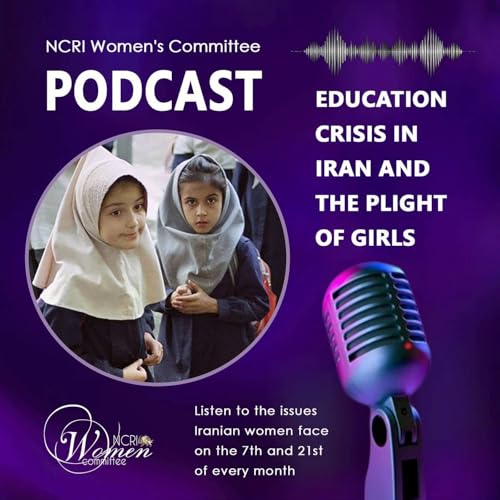
Education Crisis in Iran and the Plight of Girls
カートのアイテムが多すぎます
カートに追加できませんでした。
ウィッシュリストに追加できませんでした。
ほしい物リストの削除に失敗しました。
ポッドキャストのフォローに失敗しました
ポッドキャストのフォロー解除に失敗しました
-
ナレーター:
-
著者:
このコンテンツについて
Education in Iran, long hailed as a path to equality and social progress, is now mired in a deep crisis that weighs most heavily on girls. Despite decades of oil revenues estimated in the trillions of dollars, the government has failed to provide a functioning, equitable education system. Nearly 18 million Iranians remain illiterate or semi-literate, and an estimated two million children were out of school last year. Girls are disproportionately represented among those excluded.
Severe underfunding is a central problem. Over recent years, the share of the national budget for higher education has fallen from 4 percent to 2.8 percent, while the share for basic education plunged from 13.4 percent to 8.7 percent. In contrast, close to 30 percent of government spending goes to security forces and military activities. This diversion of resources has left the public school system with a shortage of 176,000 teachers and more than 102,000 missing classrooms. Thousands of schools lack basic plumbing or even toilets, and many rural schools operate in unsafe temporary structures.
Economic hardship compounds the crisis. Roughly five million students’ families cannot afford school supplies. Uniform prices have more than doubled, and the rising cost of books and transportation forces many parents to pull their children—especially daughters—out of school. Early marriage, permitted under current laws, remains a leading cause of girls leaving education; government data show that over a million girls under 18 have been married in the past decade.
Girls who do make it to university face a different barrier: entrenched discrimination in the job market and public life. Women hold the majority of university seats but enjoy the smallest share of employment opportunities and are excluded from many political roles. For those who remain in school, the environment is increasingly repressive. In 2024 the government formally placed schools under police oversight, giving security forces influence over both “order” and curriculum content.
The consequences are measurable. International assessments show Iranian students near the bottom globally in reading ability, with girls’ scores slipping since 2016. Persistent inequality means children from wealthy families attend well-equipped private schools, while millions of their peers struggle in dilapidated public classrooms or drop out entirely.
This educational breakdown is not simply an administrative failure but a political choice. A government that prioritizes security spending over classrooms perpetuates poverty and denies half its population—girls and young women—the tools to build independent lives. Addressing Iran’s education crisis requires both restoring adequate funding and dismantling the legal and social barriers that silence girls’ aspirations.
Support the show


